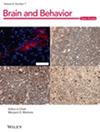Ventral Anterior–Lateral Complex of the Thalamus Mediates Chronic Stress-Induced Pain Hypersensitivity and Underlies Electroacupuncture Analgesia
Abstract
Background
Mental disorders frequently co-occur with pain, yet pain mechanisms in non-peripheral etiologies (e.g., chronic psychological stress) remain underexplored. The ventral anterior–lateral thalamic complex (VAL) is implicated in emotional processing, but its role in chronic stress-induced pain hypersensitivity is unclear. Electroacupuncture (EA) is clinically used for pain management, but its efficacy and mechanisms in chronic stress-driven pain hypersensitivity require validation.
Methods
A chronic restraint stress (CRS) model was established in male mice. Behavioral assessments were performed to quantify mechanical sensitivity (hindpaws and abdomen using von Frey filaments), thermal sensitivity (hot plate test), and spontaneous pain-like behaviors. Bidirectional chemogenetic approaches targeted VAL CaMKIIα-positive neurons. EA was applied at Zusanli (ST36) and Sanyinjiao (SP6) acupoints.
Results
CRS stably induced pain hypersensitivity phenotypes, including mechanical allodynia (hindpaws/abdomen), thermal hyperalgesia, and spontaneous pain-like behaviors. Chemogenetic inhibition of VAL CaMKIIα-positive neurons reversed these CRS-induced hypersensitivity responses. Conversely, activating these neurons in naive mice recapitulated the full spectrum of hyperalgesia phenotypes. EA alleviated CRS-induced hindpaw mechanical/thermal hyperalgesia, abdominal allodynia, and spontaneous pain. EA's effects on hindpaw mechanical/thermal hyperalgesia were mediated by suppression of VAL CaMKIIα-positive neurons. In contrast, its amelioration of abdominal allodynia and spontaneous pain persisted despite chemogenetic activation of VAL CaMKIIα-positive neurons, indicating possible distinct pathways.
Conclusion
This study reveals the pivotal role of thalamic VAL CaMKIIα-positive neurons in chronic stress-associated pain hypersensitivity and elucidates EA's analgesic mechanisms, providing novel therapeutic strategies for emotion–pain comorbidity.


 求助内容:
求助内容: 应助结果提醒方式:
应助结果提醒方式:


